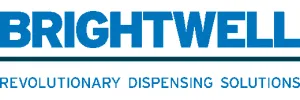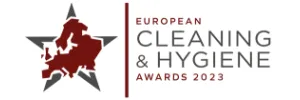News & Insights
Read the latest news from us and our clients across the globe

Posted on 18 May 2016 by adtrak.admin
Science lessons in cleaning
Advances in cleaning science are taking sterilisation techniques from the industrial clean room into schools and colleges, says Ashley White, Commercial & Safety Manager of cleaning and FM services specialist Nviro.
 As educators strive to engage their students in science and the other STEM subjects, there’s a lesson many of their school and premises managers have yet to learn.
As educators strive to engage their students in science and the other STEM subjects, there’s a lesson many of their school and premises managers have yet to learn.
By adopting a science-based approach to cleaning they can protect and enhance the health and wellbeing of students and staff. Hygienic cleaning ensures that the surfaces they come into contact with daily are not just visibly clean, but clear of contamination at a microbial level.
Decontamination cleaning may feature in contingency plans for viral outbreaks. As schools and colleges have discovered, these episodes damage reputations as well as harming students’ health and disrupting their education. But sanitisation shouldn’t be just reactive.
Enlightened clients increasingly recognise that preventive cleaning has an important role to play in their cleaning regime. Advances in technology and chemistry have made today’s sanitisation techniques more practicable and cost-effective, and we can measure their results.
There are various preventive measures that should be considered. Wiping down touch points with microfibre cloths and anti-bacterial solution will curb the transfer of potentially harmful pathogens, depending on the frequency. Hand sanitisers are increasingly common in washrooms and communal areas as a seasonal or permanent measure to suppress bacterial levels and transfer.
Some clients, on our recommendation, have installed wall-mounted sanitisation units that use UV light and ozone to decontaminate air. They destroy airborne pathogens and re-circulate clean air. Because this also removes odours, they are more often seen in toilets, but the units can be deployed in communal areas or any space.
Steam cleaning has been used in industrial and commercial kitchen applications for many years. Today’s highly efficient machines generate ‘dry’ steam vapour from small volumes of water. Superheated steam leaves behind minimal moisture and hygienically clean surfaces and crevices. An advantage is that this method may be used for soft materials such as upholstery and mattresses, as well as floors and other surfaces.
Another method that has come into the mainstream from manufacturing ‘clean rooms’ and food factories is fogging. With modern biocides, chemical fogging no longer entails major disruption or health risks from potentially toxic substances.
We use a water-based anti-microbial that is non-hazardous, odourless and non-corrosive to materials. However, as a precaution against coughing or allergic reactions, fogging is done out of hours by cleaning staff equipped with the right PPE.
Sprayed as a fine mist, the fog’s particles remain suspended in the air long enough to kill airborne viruses and bacteria. These particles also spread settle on surfaces, including walls and ceilings, furniture and floors.
An effective biocide – we recommend using a solution with four different biocides to combat any resistant bacteria – will eliminate a very wide spectrum of microbes and pathogens. These include E. coli, MRSA, C. difficile, listeria, salmonella and Legionella pneumophilia.
This ‘dry’ fogging is a highly cost-effective sanitisation technique. It needs to be preceded by a thorough deep clean because dust and debris will hamper its effectiveness.
And it is surprisingly long-lasting. We can measure the effectiveness of cleaning with a hand-held luminometer. This gives an accurate reading for the number of living cells on a surface by measuring adenosine triphosphate (ATP), the signature molecule produced by microbes and all living things.
Readings taken before and after fogging show dramatic reductions in ATP levels, and for weeks afterwards. Chemical suppliers claim that fogging agents have residual efficacy against contamination that can last for months. It is a highly effective way to prevent infectious outbreaks, or repeats, if applied after the event.
So we recommend fogging areas twice a year to maintain a good level of protection. Better to learn from the science than the harder lesson of an outbreak of the winter vomiting bug or other sickness.
www.nviro.co.uk
Published on www.b4ed.com May 2016
Experts in Public Relations Services & Communications Management
Our ServicesGenuine industry specialists in cleaning and hygiene, environmental and recycling, and facilities management
Our Sectors












